Smart Textiles Design Lab Blog at The Swedish School of Textiles
Natural Dye Workshop
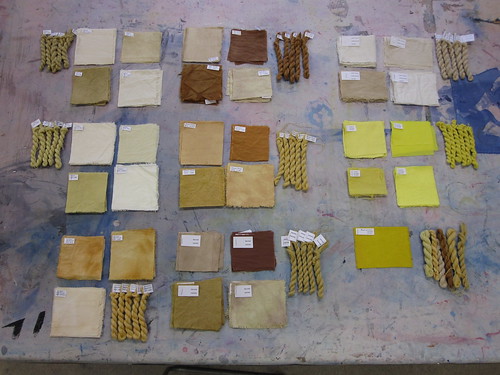
Smart textiles Design Lab has organized the Natural Dye workshop at the Swedish School of Textiles. The workshop took place on 7th and 8th of June at the Dying lab.
This time, we have tried natural dyes made with:
– Lichen Tuschiav
– Lichen Saxatilis
– Red Onion shell
– Yellow (white) Onion Schell
– Aspen leave
– Birch leave
– Turmeric
All these ingredients were cooked in boiling water for 30 min – 60 min. Then we have experimented with warm bath (90 degrees, one hour) and cold bath (room temperature, over night)
The dying materials were:
– wool yarn
– wool fabric
– silk fabric
– cotton fabric
– linnen fabric
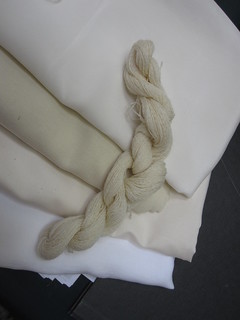
(materials without treatment)
We had some reference books to check the dying recipe.
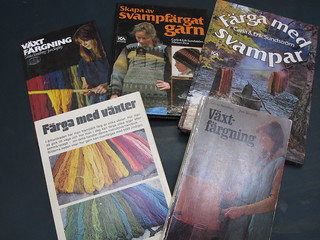
The below pictures are images of natural dye ingredients before cooking:
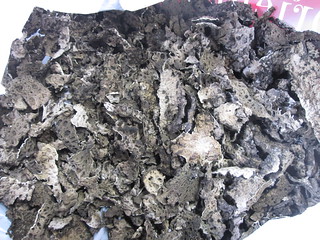
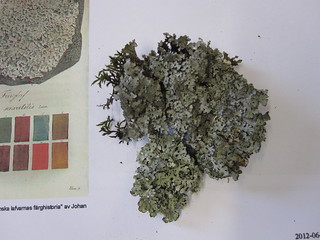
Lichen Tuschiav (left) Lichen Saxatilis (right)
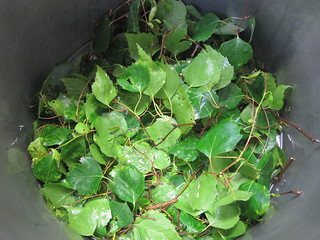

Birch (left) Aspen (right)
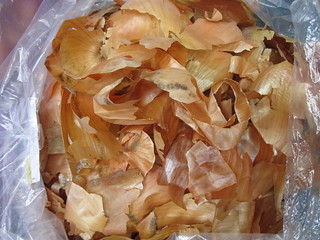

Yellow (white) Onion Shell(left) Red Onion shell (right)
Natural Dye Process:

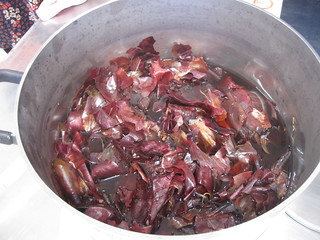
The ingredients are cooked in boiling water for 30min (onion shells) to 60 min (Lichen). We used 1L of water for about 200g ingredients. (It depends on the kinds. The more you ingredients you have, the stronger the color comes) In the case of Turmeric, one tea spoon for 1L was enough.

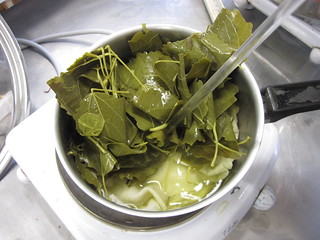
For warm dye bath, we kept the bath at 90 degrees. Make sure not to boil them at this point.


When adding the textile materials, we wet it with warm water first to avoid the sudden temperature change on materials.


We have also experimented with cold dye bath. We added the textile material in the room temperature dye bath and left it over night.



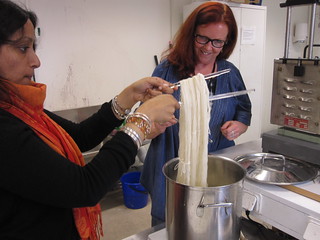
We have also tried to treat the material (wool yarn and wool fabric) with Alm salt before adding them into dye bath. We used 20g of Alm for 5L of water, heat it up to 90 degrees and added the wool fabric and yarn and kept in 90 degrees for a while. (the picture shows how to evenly treat the wool yarn by turning them with sticks)
If you treat the material with Alm first, you get the deeper color on fabric as the result. Although, washing down Alm to drain is not environmentally friendly, so we try to avoid using it. (To compare the result, we treated small amounts in the workshop)
Results:
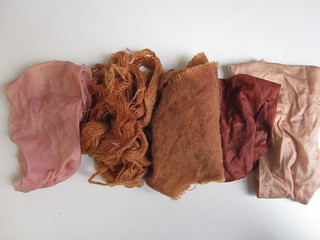
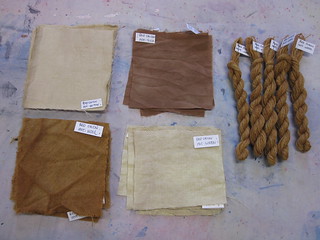
Red Onion Warm Bath (left: when wet)


Red Onion Cold Bath (left: when wet)

Yellow Onion warm Bath (when wet)
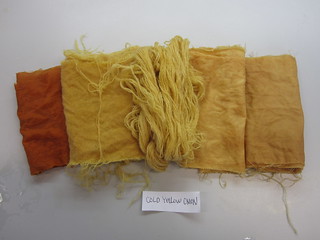
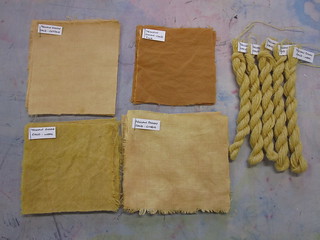
Yellow Onion Cold Bath (left: when wet)


Aspen Warm Bath (left: when wet)

Lichen Tuschiav Cold Bath (when wet)

Lichen Tuschiav Warm Bath
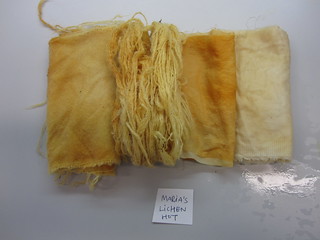
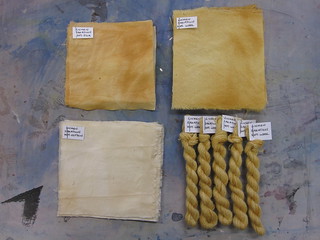
Lichen Saxatilis Warm Bath (left: when wet)


Turmeric Warm Bath (left: when wet)
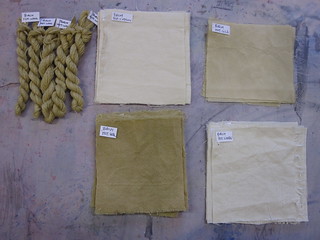
Birch Warm Bath
More pictures on Flickr:
